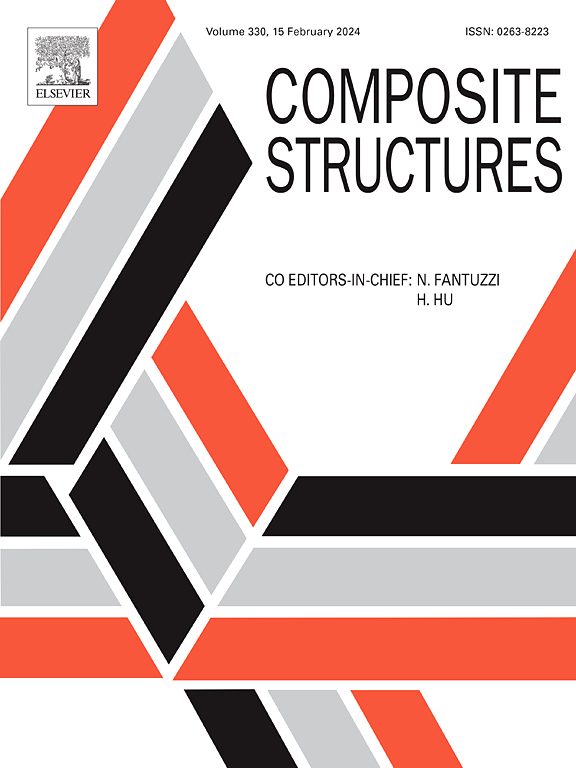Machine learning-based capacity model for CFST columns with damaged BFRP jackets
IF 6.3
2区 材料科学
Q1 MATERIALS SCIENCE, COMPOSITES
引用次数: 0
Abstract
The use of concrete-filled steel tubular (CFST) columns reinforced with basalt fiber-reinforced polymer (BFRP) jackets is increasingly prevalent in construction engineering. However, BFRP jackets are prone to physical damage during joint design or maintenance, which can weaken their confinement effect on CFST columns. Consequently, the damage parameters of BFRP jackets are crucial for the reinforcement of CFST structures. In this study, past experimental data were validated using a finite element model (FEM). Building on this reliable FEM, a comprehensive database was created, consisting of 495 data points, encompassing various damage conditions such as direction, location, angle, and quantity. A method for normalizing different damage parameters was proposed to quantitatively describe their respective damage characteristics. With the exception of the circumferential slotting damage type, all other damage types resulted in a degradation of the strengthened stiffness. Six machine learning methods were then employed to establish the capacity model, where Random Forest (RF) and CatBoost significantly outperform linear models, with R2 values exceeding 0.97. SHAP analysis reveals that the scale of vertical grooves and the regional damage coefficient are key factors influencing the prediction. The research can provide a theoretical basis for the design and maintenance of BFRP-CFST columns.
求助全文
约1分钟内获得全文
求助全文
来源期刊

Composite Structures
工程技术-材料科学:复合
CiteScore
12.00
自引率
12.70%
发文量
1246
审稿时长
78 days
期刊介绍:
The past few decades have seen outstanding advances in the use of composite materials in structural applications. There can be little doubt that, within engineering circles, composites have revolutionised traditional design concepts and made possible an unparalleled range of new and exciting possibilities as viable materials for construction. Composite Structures, an International Journal, disseminates knowledge between users, manufacturers, designers and researchers involved in structures or structural components manufactured using composite materials.
The journal publishes papers which contribute to knowledge in the use of composite materials in engineering structures. Papers deal with design, research and development studies, experimental investigations, theoretical analysis and fabrication techniques relevant to the application of composites in load-bearing components for assemblies, ranging from individual components such as plates and shells to complete composite structures.
 求助内容:
求助内容: 应助结果提醒方式:
应助结果提醒方式:


